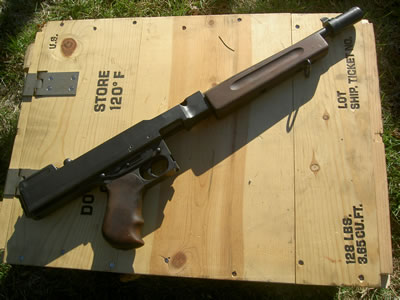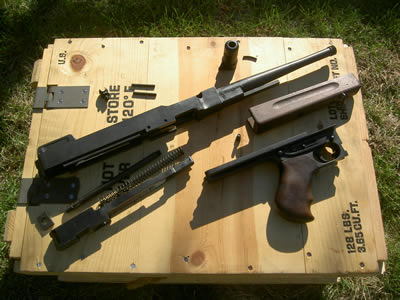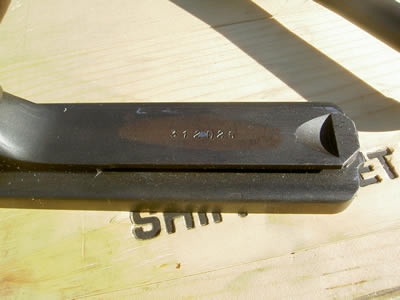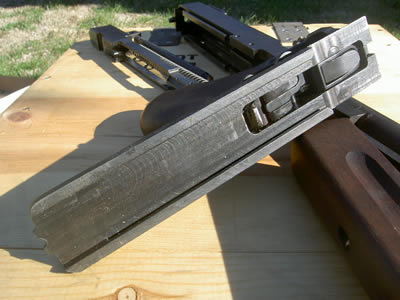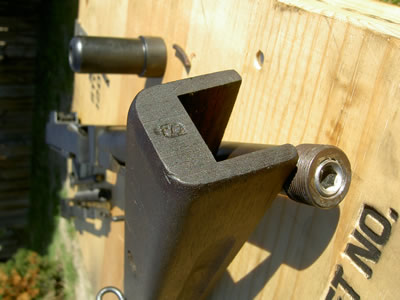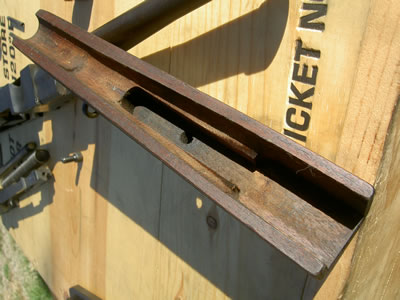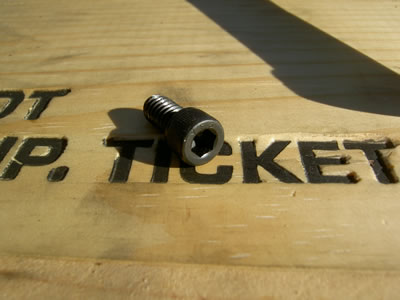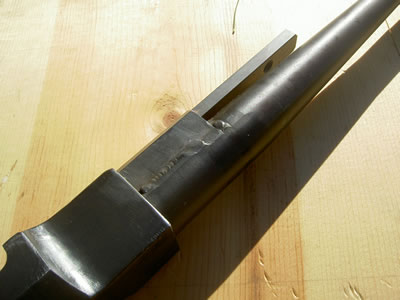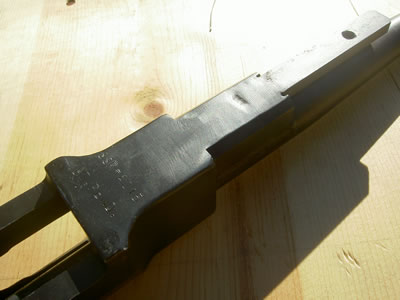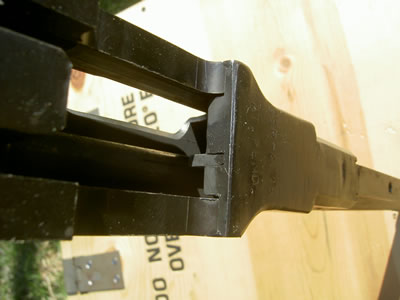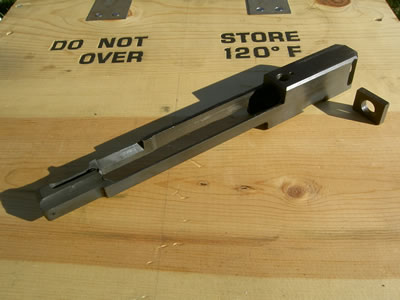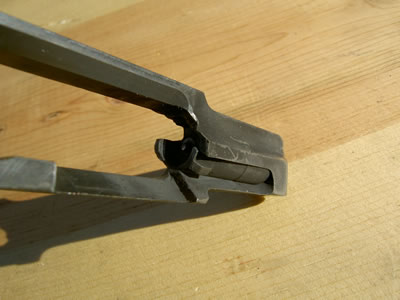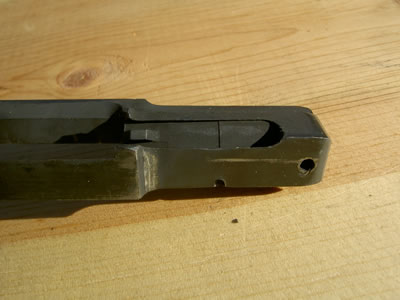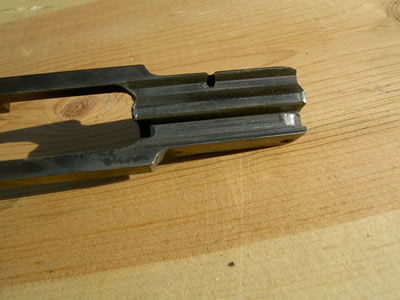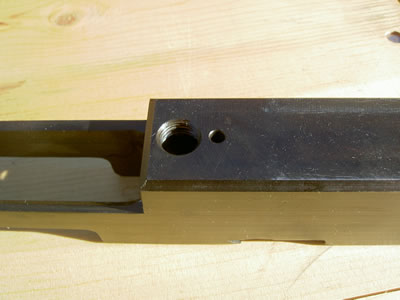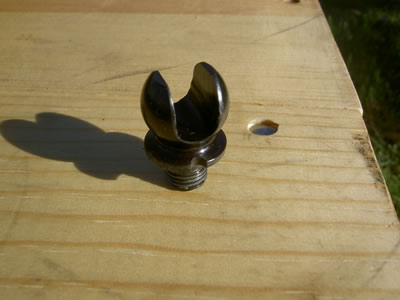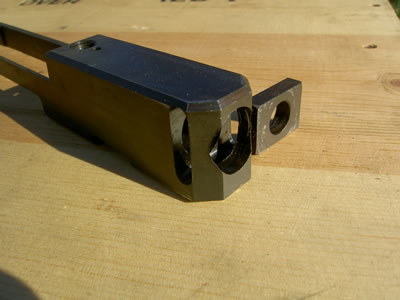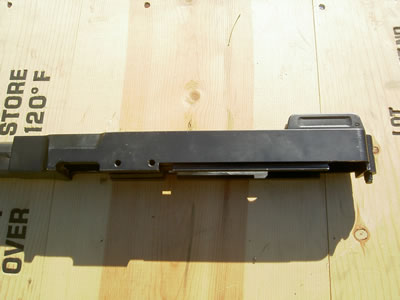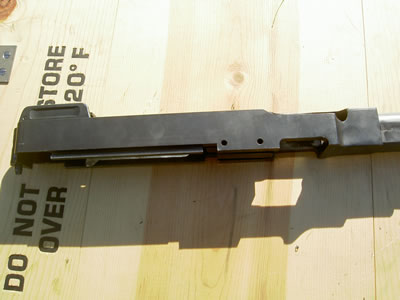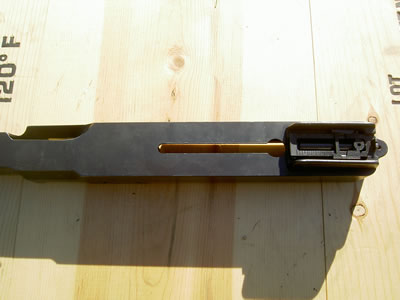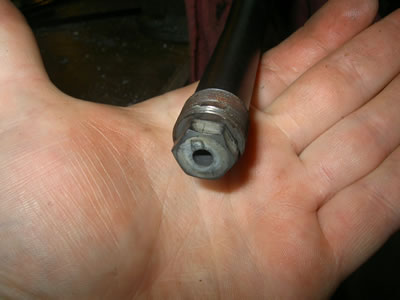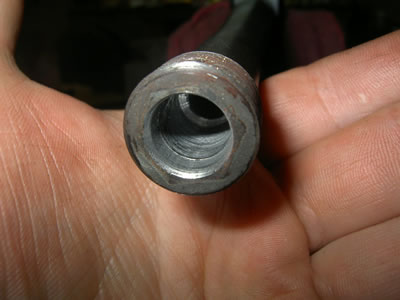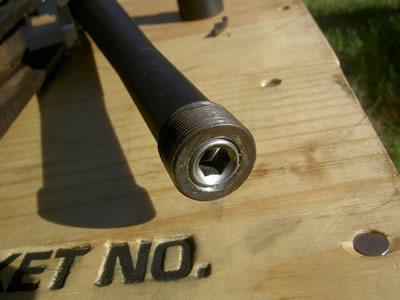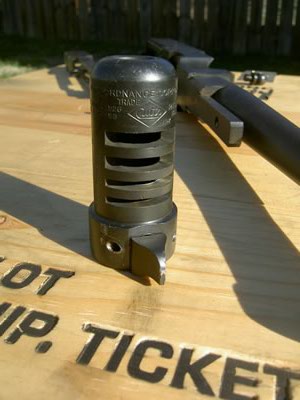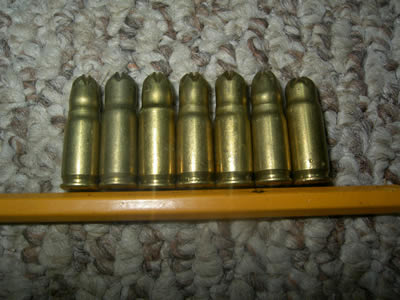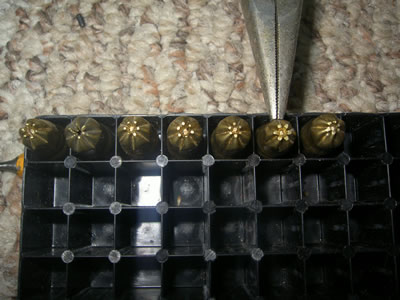SS Room Thompson - A look inside
Review Date: 12/15/2012
Author: Chris Guska
Background:
Schoessler's Supply Room / Military Precision were the first to the market with a BATF approved "Blank Firing Only Non Gun" in Sub Machine Gun Form, with the PPSH41, followed by MP40 and 1928 Thompson.
While I value the "progress" that was achieved by SS Room in forcing ATF rulings on Blank Firing Only Non Guns and Blank Only Cartridges, I found their products to be poorly executed from a gunsmith's stand point.
SS Room closed down a number of years back because of being called to active duty military service. During the time that they were open, they did support their products and provide service to make sure their products worked and customers were taken care of.
Since then, I've had the opportunity to handle as well as repair SSR PPSH 41's, SSR 40's and SSR 1928's. The Thompson is the least screwed up of them, and the MP40 the worst. I consider all of these guns to be a "mess" and they require corrections. Some of the issues faced by these guns come from abuse via their owners, others from materials & machine work, and still more by inconsistent blanks.
Recently, I had a SSR 1928 come across my work bench for a case head separation / neck stuck in the "chamber". With this opportunity, I took some photos to illustrate the mechanics of the action, and to comment on the flaws I see and recommended remedies.
What's Inside?
First off, these guns utilize some real M1928 Thompson parts - specifically ones that were Russian returns from a few years ago. I'll get into the individual parts once we look at the whole.
The SS Room BFONG's all operate "backwards", in that they pull a cartridge out of the magazine towards the user into a chamber. These are open bolt guns that utilize a fixed firing pin to slam fire the blanks into a simple tapered chamber that redirects gas into a tube 180 degrees to vent out the "barrel".
Starting off with the lower, it is a russian return USGI M1928 lower. As far as I can see, there are no modifications that would prevent this from being used - or interchangeable with a full auto M1928(a1)
The foregrip is also USGI, albeit modified to fit over the modified "barrel" and grip mount. A large area has been milled away for clearance.
The foregrip is held on by a socket cap screw rather than the original. Its obvious they had original 1928 Thompson kits to work with, why the hell didnt they use the original screw?
As mentioned above, the foregrip was modified to fit over a section of the "barrel" and grip mount that is wider than normal. This area has been made into a large hollow cavity so that the internal "slide" assembly has enough room to travel.
While it is covered by the foregrip, I'm unimpressed with the finishing work.
Looking further into the receiver, the fixed ejector is visible in the receiver nose. The gas re-direction tube is visible. This re-directs the gas from the chamber forward towards the muzzle.
Looking towards the rear, is the fixed "chamber". The cartridges are pulled into this by the slide.
Here's the slide assembly.
The slide utilizes a fixed firing pin and AR15 type extractor and spring. The portion illustrated reciprocates forward into the barrel "cavity" described above.
The slide unit is held open using the original Thompson dropping block sear, and a corresponding notch on the bottom of the slide. This sear surface has a tendency to get peened / burred on these guns. I didn't have an opportunity to rockwell test the slide, but a simple file test tells me that its not as hard as I would like.
In my opinion, these should be heat treated into the mid Rockwell C 40 range, which would significantly enhance long term durability.
This sear engagement surface gets peened because its soft, and the guns are running too hot / fast. This is a result of the aperture being too small / blanks too hot.
Flipping the slide over to look at the top, the charging handle hole is visible.
The charging handle is a new made part. The bottom is threaded to fit into the slide, then is retained in place with a roll pin.
The roll pin supplied is a little too long, so care must be exercised in reassembly. If the roll pin is set too deeply, it protrudes into the recoil spring bore, potentially causing compression issues.
The recoil spring guide is threaded to go into a corresponding hole in the rear of the "chamber" block illustrated above. It is installed via the flats for an open end wrench.
The recoil spring is trapped between the chamber and inside of the slide, with the guide being fed through a hole in the rear of the receiver, through an alignment guide and the slide itself - then tightened into the rear of the chamber.
Of note are the misplaced rear sight holes and poorly installed rear sight rivets.
Exterior receiver details - no nomenclature engraved. No radiuses milled to match original contours except receiver heel. Rough shape of a M1928 Thompson, but the finish is poor. Some edges have burrs on them, some have been quickly broken with a file, while others have been buffed so heavily as to lose straight lines.
The ejection port has an interesting angle to it to try and hide some of the action.
The "chamber" block is held in with roll pins. Roll pins are a joke for any load bearing application in my opinion.
The factory installed BFA is a 3/8 NC Bolt that has been drilled through and cut off at a 3/8ths length. The aperture measured out to .195, but i suspect that it was highly eroded. This is far too small based on the "run aways" that this gun experiences.
The muzzle is threaded for 3/8 NC. An original Thompson barrel was not used
The largest aperture you can practically drill a 3/8 set screw to is 5mm, which is .198. Anything larger than that and you start to drill out the flats of the allen socket. For this gun, I recommend re-drilling the muzzle to thread for 1/2 NC, which is what I did on this gun.
The aperture that reliably runs this gun with Atlantic Wall 9.3mm blanks is .235, which is 0.040 larger than what is installed from the factory. 0.040 in blank adapting is a mile.
Using a larger aperture eliminated the "run away" problem of the gun, such that when i release the trigger it actually stops firing. Holy Crap Batman! Furthermore, the gun runs slower and slightly "throatier" in sound. I suspect the battering of the sear surfaces will also be reduced.
The muzzle is externally threaded to accept an Original Cutts Compensator as supplied from the factory with this gun.
Of note, the opening of the Cutts Compensator is too small for a 1/2 inch set screw to fit through. The Cutts must be removed in order to swap set screws - which shouldn't be common but is potentially annoying. The Cutts can be drilled out to allow the set screw to be removed, or you can potentially thread the barrel for a size larger than 3/8 NC that still allows the restrictor to be removed through the Cutts.
Regarding Blanks:
In my opinion, the blanks have always been one of the many causes of these guns to run poorly.
While getting the 9.3mm BFONG blank ruled to be a BLANK only cartridge was a boon for the hobby - the problem that came with it were crappy copycats.
SS Room held the design and figured out the mechanics and prototyping of the cartridge. Everybody else after that reverse engineered it - in both dimension and load. This lead to serious inconsistencies as well as quality problems in blanks available to consumers.
Headspace, sizing, powder load and crimp all are critical to reliable function of the blank.
Here's a series of photos showing 7 different 9.3 BFONG blanks collected over the years. It illustrates my point with regards to consistency.
Headspace is ALLL over the place. For anyone that reloads... this is embarrassing.
Some of the blanks were too long and show signs of being "trimmed" or "ground" after they were crimped. Furthermore, some of the crimps aren't closed or show filler used to close them.
One of the early problems with 9.3mm blanks were poorly formed crimps, allowing powder to dump out. A combination of inconsistent loads with incomplete ignition due to poor crimp caused reliability issues.
I'm happy to report that pretty much everybody making shitty 9.3mm blanks has been run out of business - with only Joe Swanson and Atlantic Wall left as far as I know. I am unsure of where NJ Sekela is getting his blanks, or any reference to quality.
The Joe Swanson blanks are hotter than the Atlantic Wall load. I STRONGLY recommend making modifications to the gun to allow larger restrictors to be installed if Joe Swanson blanks are used. Several MP40's have been "blown up" using these blanks.
I highly recommend modifying the Thompson to take larger set screws, and tuning your gun to the specific blanks you will be using.
90th IDPG Reviews



